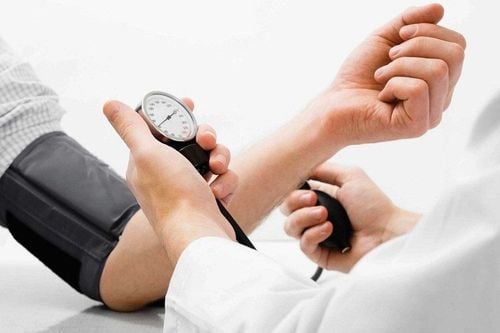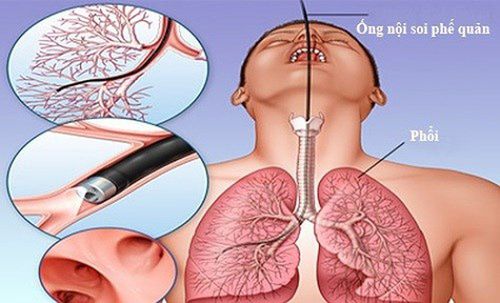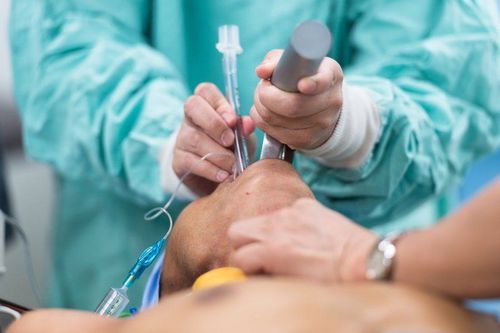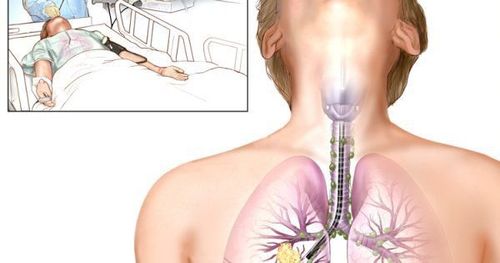This is an automatically translated article.
The article was professionally consulted by Dr. Phan Dinh Thuy Tien - General Internal Medicine - Department of Examination & Internal Medicine - Vinmec Nha Trang International General Hospital.Bronchoscopy under anaesthesia is a procedure that examines the inside of the bronchial tree, serves in the diagnosis, care, and treatment, and is performed in patients with cough, severe irritation, and the procedure requires need extended time.
1. The role of bronchoscopy under anesthesia
Endoscopy has an important role in characterizing the internal anatomical lesions of the bronchi. Through the patient sample taken to diagnose, determine the cause, differentiate and predict the disease, in addition, conduct treatment procedures.Bronchoscopy under anaesthesia is an important diagnostic, care and therapeutic technique performed in patients with cough, severe irritation or in long-term procedural interventions.
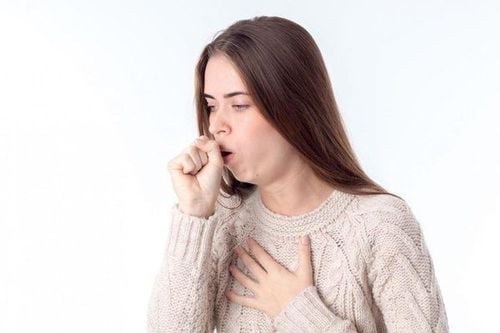
Nội soi có vai trò quan trọng trong việc mô tả tổn thương giải phẫu bên trong của phế quản
2. Indications and contraindications for bronchoscopy under anesthesia
2.1 Designation
Indications for bronchoscopy under anesthesia for the following cases:Malignancy such as: diagnosis of tracheal cancer, bronchial cancer staging, follow-up after treatment for bronchial cancer, assessment patients with malignant lesions of head and neck area, evaluated in cases of esophageal cancer,... Mediastinal mass Infection: Pneumonia recurs or has slow improvement, infection in patients declines immune system, lung abscess, empyema,... Some other indications: Coughing up blood, aspiration of foreign body, atelectasis, interstitial lung disease, chest trauma, pleural effusion with unexplained secretions , locate the endotracheal tube, hoarse voice due to paralysis of the vocal cords, prolonged pneumothorax,...
2.2 Contraindications
Bronchoscopy under anesthesia is contraindicated in the following cases:Cardiovascular disorders: Severe arrhythmia, myocardial infarction, severe heart failure, unstable angina, uncontrolled angina high blood pressure,... People with respiratory failure Uncontrollable bronchial asthma Dilated alveoli, many large fragile air cysts that are easily ruptured Pneumothorax without drainage Have a history of pneumothorax in the last 1 month Disorder coagulation .

Bệnh nhân suy hô hấp chống chỉ định thực hiện nội soi phế quản gây mê
3. Perform bronchoscopy under anesthesia
3.1 Preparation
Perform bronchoscopy under anesthesia by nurses and respiratory specialists and anesthesiologists. For the patient, the medical staff will explain the purpose and benefits as well as possible complications. The patient should fast for 6 hours before the endoscopy. In addition, it is necessary to prepare some necessary tools for the process including:Halogen or xenon light source, image processor, camera, video monitor and video recorder or polaroid imager. Flexible fiber bronchoscopes come in diameters ranging from 3mm for children and 6mm for adults. Catheters, brushes to collect specimens to look for bacteria and cells, clamps for foreign bodies, biopsy pliers, aspiration needles. Monitors, suction machines, oxygen systems, endotracheal intubation and tracheostomy devices, other emergency supplies and medications. Specialized tools for cleaning bronchoscopes and specialized bronchoscope containers Drugs: anesthetics, lidocaine solutions, adrenaline, sodium chloride Syringes of all kinds Sterile gauze Sterile.
3.2 Steps to take
Place the patient in the supine position, breathe in oxygen with glasses 2-3 liters/min. Intravenous line Intubation Monitor vital signs Perform general anesthesia. However, it is necessary to ensure that the patient breathes on his own, maintaining SpO2 > 95% Insert the endoscope through the nostrils or mouth if the nostrils are narrow. Do not put the bronchoscope through the nose when there is a hemostasis or blood clotting disorder to avoid nosebleed complications. If the endoscope is inserted through the mouth, also use a protective device to prevent the patient from biting the endoscope. Additional anesthesia by injecting xylocaine 2% from the glottis to the bronchus During endoscopy, ensure that the endoscope always goes in the middle of the trachea to limit damage to the tracheobronchial wall. the healthy side first so as not to spread the disease from the diseased lung to the healthy lung. Carry out sampling technique depending on the lesion on the lung film and bronchoscopy images such as: bronchoalveolar lavage, transbronchial aspiration. bronchial tumor biopsy. It should be noted that transbronchial biopsies are not performed. Conduct therapeutic interventions such as: ablation of tumors in the tracheobronchial lumen, removal of foreign bodies, ablation of tracheal stenosis scars by high-frequency electrocoagulation, laser,... During the entire endoscopic process, it is necessary to follow Monitor the patient's condition in the endoscopy room and transfer the patient to the recovery room when the patient is fully awake.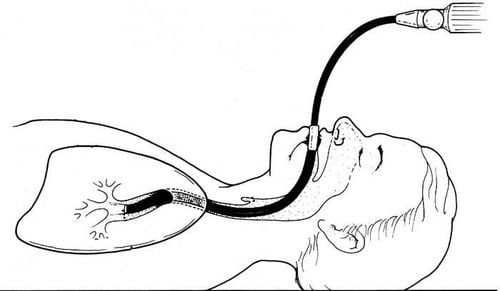
Các bước tiến hành nội soi phế quản dưới gây mê
3.3 Monitoring and handling of accidents
After bronchoscopy under anesthesia, the patient will be monitored for vital signs: pulse, temperature, blood pressure and oxygen saturation, electrocardiogram.In addition, the patient may experience some complications such as:
Hypoxia: During flexible bronchoscopy, the oxygen pressure in the arterial blood PaO2 can decrease by 10 mmHg, SaO2 by 2%-5 % or more. If there is acute respiratory failure, stop the endoscopy immediately, increase oxygen flow, use bronchodilators by inhalation or infusion if necessary. Bleeding: Bleeding complications often occur during biopsies. To prevent serious complications of hemoptysis when doing bronchial biopsies and transbronchial biopsies, the first biopsy should be done with a small and shallow press to see the extent of bleeding, if not dangerous, then biopsy. really. Bacterial infection: If the patient has a fever, coughs and produces cloudy sputum, then sputum culture should be done to find the bacteria causing the disease. Bronchospasm: This complication often occurs due to inadequate anesthesia to inhibit the sensory stimulation causing bronchospasm through the parasympathetic nerve. Care should be taken to prevent this complication in people with a predisposition to increased bronchial reactivity such as bronchial asthma, chronic obstructive pulmonary disease. Pneumothorax: Occurs in 5% - 5.5% in transbronchial biopsies, bronchial brushing or in patients with severe alveolar dilatation. If the pneumothorax is small, it is possible to just give the patient oxygen, take a follow-up film. In case of multiple pneumothorax, open the pleural cavity to drain the air.
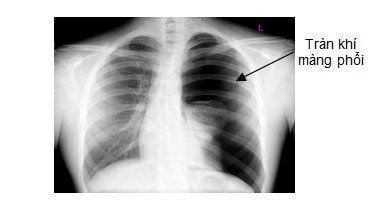
Tràn khí màng phổi có thể xảy ra sau khi nội soi phế quản
Any questions that need to be answered by a specialist doctor as well as customers wishing to be examined and treated at Vinmec International General Hospital, you can contact via the website.
Please dial HOTLINE for more information or register for an appointment HERE. Download MyVinmec app to make appointments faster and to manage your bookings easily.




